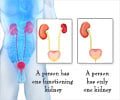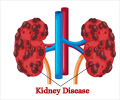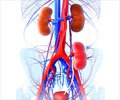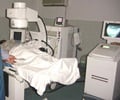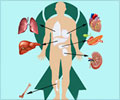In a trial of an experimental protocol designed to induce tolerance to HLA mismatched kidney transplant, four of five patients have been able to discontinue immunosuppressive drugs.
The report in the Jan. 24 New England Journal of Medicine describes the first successful, intentional induction of tolerance across the HLA barrier in a group of transplant recipients.
“We are very encouraged by our initial success in inducing tolerance across the HLA barrier, something that has been a major goal of transplant immunology for years,” says David H. Sachs, MD, director of the MGH Transplantation Biology Research Center, the study’s senior author. “While we need to study this approach in a larger group of patients before it is ready for broad clinical use, this is the first time that tolerance to a series of mismatched transplants has been intentionally and successfully induced.”For more than three decades, Sachs and his colleagues have been pursuing ways to induce tolerance, tricking the immune system into regarding a donor organ as “self.” Over the years the team has developed an approach in which the organ recipient receives bone marrow from the donor along with the needed organ to produce a state called mixed chimerism, an immune system that blends elements of both the donor and recipient.
In 1998 the team first used this approach in a woman whose kidney failure had been caused by the bone marrow cancer multiple myeloma, which can be treated with marrow transplantation. That patient received both marrow and a kidney from her HLA-matched sister and was able to discontinue immunosuppressive drugs about two months later. More than nine years later she remains healthy, and since then six more patients with myeloma-induced kidney failure have successfully become tolerant to HLA-matched transplants through this process
The current study enrolled five patients whose kidney failure resulted from non-cancerous conditions and who did not have an HLA-matched living donor. The study protocol begins with therapy designed to partially destroy the recipient’s bone marrow and treatment with an antibody that reduces the level of T cells, the immune system component primarily involved in organ rejection. After receiving the transplanted kidney and bone marrow, patients stay in a relatively sterile environment for about two weeks, allowing the bone marrow to regenerate and produce new immune cells that are tolerant of the donor organ.
The first two patients in the trial were successfully weaned from immunosuppressive drugs in the months following their transplant, but the third patient developed early rejection and eventual failure of the donor kidney. Since the antidonor immune response of that patient – who subsequently received a successful second transplant with conventional immunosuppression – was primarily caused by the immune system’s B cells, the study protocol was adjusted to include an additional antibody targeting B cells. The fourth and fifth patients, both of whom received the revised protocol, were able to discontinue immunosuppressives 8 and 10 months after their tranplants. All four of the successfully transplanted patients continue to have normal kidney function from two to more than five years later.
As seen in previous animal studies and in some of the myeloma patients receiving matched transplants, the chimeric state – the presence in bone marrow of immune cells from both recipient and donor – was temporary, even though tolerance to donor tissue continues. Sachs and his colleagues are continuing to investigate this phenomenon, which they believe may involve some factor provided by the donor organ. “We have shown in monkeys that the kidney itself is required to maintain this state that we call peripheral tolerance, although we still don’t fully understand the mechanism,” he explains.
Advertisement
The study was supported by grants from the Immune Tolerance Network; the National Institute of Allergy and Infectious Diseases; the National Institute of Diabetes, Digestive and Kidney Diseases; and the Juvenile Diabetes Research Foundation. Additional co-authors of the NEJM report are Susan Saidman, PhD, Juanita Shaffer, Frederic Preffer, PhD, Jay Fishman, MD, Bimalangshu Dey, MD, Dicken Ko, MD, Martin Hertl, MD, Nelson Goes, MD, Waichi Wong, MD, Winfrid Williams, and Robert Colvin, MD, of the MGH; and Manikkam Suthanthiram, MD, Ruchuang Ding, MD, and Vijay Sharma, PhD, Weill Medical College of Columbia University.
Advertisement
Source-Eurekalert
SPH/GA

